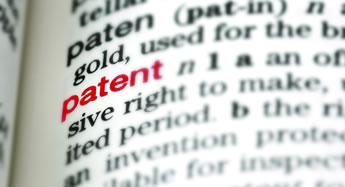Pemetrexed update – decision of the German Federal Court of Justice now published
September 2016
The German Federal Court of Justice ("FCJ") has recently published its decision of 14 June 2016 in the pending Pemetrexed proceedings between Eli Lilly and Actavis, in which it reversed the non-infringement decision of the Higher Regional Court of Düsseldorf ("Appeals Court") and referred the case back for further examination on the question of whether Actavis’ pemetrexed product does infringe Eli Lilly’s EP 1 313 508 (EP508). It is a landmark decision that provides some interesting new insights into the scope of protection of patents under the doctrine of equivalence as well as the scope of protection of "Swiss-type claims".
Facts
In 2012, Eli Lilly initiated proceedings against Actavis at the Regional Court of Düsseldorf, claiming that Actavis’ pemetrexed product infringes its EP508 relating to a “combination containing an antifolate and methylmalonic acid lowering agent”. In detail, claim 1 of EP508 concerned the use of pemetrexed disodium in combination with vitamin B12 in the manufacture of a medicament for inhibiting tumour growth in mammals.
In its decision of 3 April 2014, the Regional Court of Düsseldorf held that Actavis’ pemetrexed product, which uses pemetrexed dipotassium instead of pemetrexed disodium, infringes EP508 under the doctrine of equivalence. However, in its decision of 5 March 2015, the Appeals Court reversed the first instance decision, denying literal as well as equivalent infringement.
Decision of the FCJ
In its judgment of 14 June 2016, the FCJ reversed the decision of the Appeals Court and referred the case back for re-examination on the issues of equivalent as well as indirect patent infringement.
Whilst the FCJ agreed with the Appeals Court that the attacked embodiment does not literally infringe EP508, the Court concluded that it cannot be ruled out that the attacked embodiment infringes the patent-in-suit by equivalent means. In particular, the Court discussed the third requirement of the infringement under the doctrine of equivalence, i.e. whether the allegedly infringing embodiment (pemetrexed dipotassium) is legally equivalent to the claimed embodiment (pemetrexed disodium) based on the protected teaching of the patent.
The FCJ held that, contrary to the view of the Appeals Court, the principles established by the FCJ in its decisions Okklusionsvorrichtung (occlusion device) and Diglycidverbindung (diglycidyl compound) are not applicable to the case at hand, because the facts of these proceedings differ significantly from the Pemetrexed case.
In Okklusionsvorrichtung and Diglycidverbindung, the patent description explicitly mentioned at least two specific embodiments suitable to achieve the effects of the invention, but only one of these embodiments had been included in the patent claim. Accordingly, the FCJ held that the final version of the patent claims reflected a conscious decision by the patent owner to limit the scope of protection for the respective patent. Therefore the use of the embodiment, which was only mentioned in the patent description, but not in the patent claim, could not qualify as an equivalent patent infringement.
In the Pemetrexed case, however, the patent claims of the patent-in-suit do not reflect a comparable selection decision of the patent owner. The patent description generally refers to the use of antifolates, and the only specific embodiment mentioned is the use of pemetrexed disodium. Therefore, the fact that pemetrexed disodium is also explicitly mentioned in the patent claims does not necessarily mean that the patentee consciously disclaimed other antifolates and salts of such antifolates (such as pemetrexed dipotassium).
The FCJ considered other options for a conscious selection of pemetrexed disodium, but denied all of them based on the patent and the factual findings of the Appeals Court. For example, the FCJ elaborated that in cases where the patent description only refers to a group of embodiments, the mentioning of only one specific embodiment in the patent claim might also qualify as a selection decision, if this embodiment has specific characteristics which are important to achieve the effect of the invention, distinguishing it from other embodiments of the same group. However, the Court held that these requirements are not fulfilled in the Pemetrexed case, because the patent specification considers all antifolates suitable for achieving the inventive result. Furthermore, there are no indications that pemetrexed disodium has certain advantages over other pemetrexed salts.

The FCJ also considered whether a conscious selection decision of the patentee can be based on the comparison between a (broader) application and a (narrower) granted version of the patent. The Court clarified that in such a scenario, a conscious selection decision can only be assumed if it is apparent that the claims were phrased narrowly in order to delimit the subject matter of the patent from the prior art. In the case at hand, however, the FCJ concluded that the comparison of the earlier and final version of the patent does not provide a clear answer as to why the final version of the claims only specify pemetrexed disodium. Hence, there was no reason to assume that the limitation was based on a conscious selection by the patentee.
The FCJ concluded that the Appeals Court erroneously denied an indirect patent infringement, and clarified that a Swiss-type claim (such as the main claim of the patent-in-suit) basically offers the same protection as an EPC2000 medical use claim according to Article 54 (5) of the European Patent Convention, i.e. purpose limited compound protection. Accordingly, the FCJ did not agree with the Appeals Court that an indirect infringement could already be ruled out, because the defendant never supplied pemetrexed disodium for the manufacture of the infusion solution. Rather, the fact that the pemetrexed ions are supplied in the form of pemetrexed dipotassium may be sufficient.
Finally, the FCJ concluded that it is not in the position to render a final decision. Rather, it is for the Appeals Court to assess whether the first and the second requirement of the doctrine of equivalence are fulfilled in the present case, i.e. whether the use of the attacked embodiment (pemetrexed dipotassium) produces the same technical effect as the claimed embodiment (pemetrexed disodium) and whether the allegedly infringing embodiment was obvious to the person skilled in the art. The FCJ points out that the UK courts denied the last requirement.
Furthermore, in the event that it denies direct infringement under the doctrine of equivalence, the Appeals Court has to assess whether Eli Lilly might be able to obtain an injunction based on indirect infringement. In this context, several issues have to be considered, e.g. whether the dissolution of the pemetrexed dipotassium in a sodium diluent creates a mixture that can be considered to be pemetrexed disodium in the sense of the patent claim, and whether this aspect is still relevant in view of the declaration of the defendant in the UK that it will market its pemetrexed product only with instructions to dilute it with dextrose/glucose solution.
Comments
This is a landmark decision which clarifies that the German doctrine of equivalence still has a much broader scope than the decision in Okklusionsvorrichtung seems to suggest. The FCJ makes clear that the latter decision rules out an equivalent patent infringement, except for in exceptional circumstances, i.e. if a conscious selection decision has obviously been made by the patentee.
The Pemetrexed decision also broadened the scope of protection for Swiss-type claims in Germany. Whereas previously in order to infringe Swiss-type claims it seemed necessary to manifestly arrange a substance for the protected medical use (“manufacture”), now following the FCJ's decision, it seems sufficient that the substance is eventually used for the protected medical use. Accordingly, indirect infringement of a Swiss-type claim is possible, if a neutral substance is supplied and it is obvious that the customer will use it for the still protected medical use without any prior manifest arrangement of the product for such a use.
If you have any questions on this article or would like to propose a subject to be addressed by Synapse please contact us.


"The FCJ also considered whether a conscious selection decision of the patentee can be based on the comparison between a (broader) application and a (narrower) granted version of the patent."

